The Mercedes-Benz 190E stands as one of the most iconic compact executive cars ever produced, capturing the hearts of automotive enthusiasts worldwide since its debut in 1982. This legendary sedan didn’t just revolutionize Mercedes-Benz’s approach to smaller vehicles – it redefined what we expected from luxury compact cars entirely.
We’ve witnessed countless vehicles come and go, but the 190E’s timeless design and engineering excellence continue to command respect decades later. From its groundbreaking aerodynamics to its race-bred pedigree in DTM motorsports, this remarkable machine proved that size doesn’t determine greatness.
Whether you’re a seasoned collector hunting for the perfect example or simply curious about automotive history, the 190E’s story offers fascinating insights into German engineering at its finest. We’ll explore what makes this compact Mercedes so special and why it remains a sought-after classic that continues to appreciate in value today.
Mercedes-Benz 190E Overview and History
Mercedes-Benz launched the 190E in 1982 as the W201 chassis designation, marking the company’s ambitious entry into the compact executive car segment. The project represented a important departure from Mercedes traditional focus on larger luxury vehicles, positioning the brand to compete directly with BMW’s 3 Series and Audi’s compact offerings.
Development of the 190E began in the mid-1970s when Mercedes engineers recognized the growing demand for premium compact cars in European markets. Bruno Sacco led the design team, creating the car’s distinctive angular profile that became synonymous with 1980s Mercedes aesthetics. The engineering team prioritized structural rigidity and crash safety, incorporating crumple zones and high-strength steel construction throughout the chassis.
Production commenced at Mercedes Sindelfingen plant in Germany, with the 190E receiving widespread acclaim for its build quality and refinement. Initial engine offerings included a 2.0-liter naturally aspirated four-cylinder producing 122 horsepower and a more powerful 2.3-liter unit generating 136 horsepower. Mercedes positioned these engines to deliver a balance of performance and fuel efficiency that appealed to executive buyers.
The motorsports division transformed the 190E into a formidable racing machine through the DTM program starting in 1984. Mercedes developed the legendary 2.3-16 and 2.5-16 Evolution models specifically for homologation requirements, featuring aggressive aerodynamic packages and high-revving engines. These competition variants achieved remarkable success on European racing circuits, securing multiple championship titles and establishing the 190E’s performance credentials.
European markets embraced the 190E immediately upon launch, with sales exceeding 100,000 units in the first year alone. The model’s success validated Mercedes strategy of expanding into smaller vehicle segments while maintaining premium positioning and build quality. Production continued through 1993, with Mercedes manufacturing approximately 1.9 million W201 chassis vehicles across all variants and markets worldwide.
Design and Exterior Features
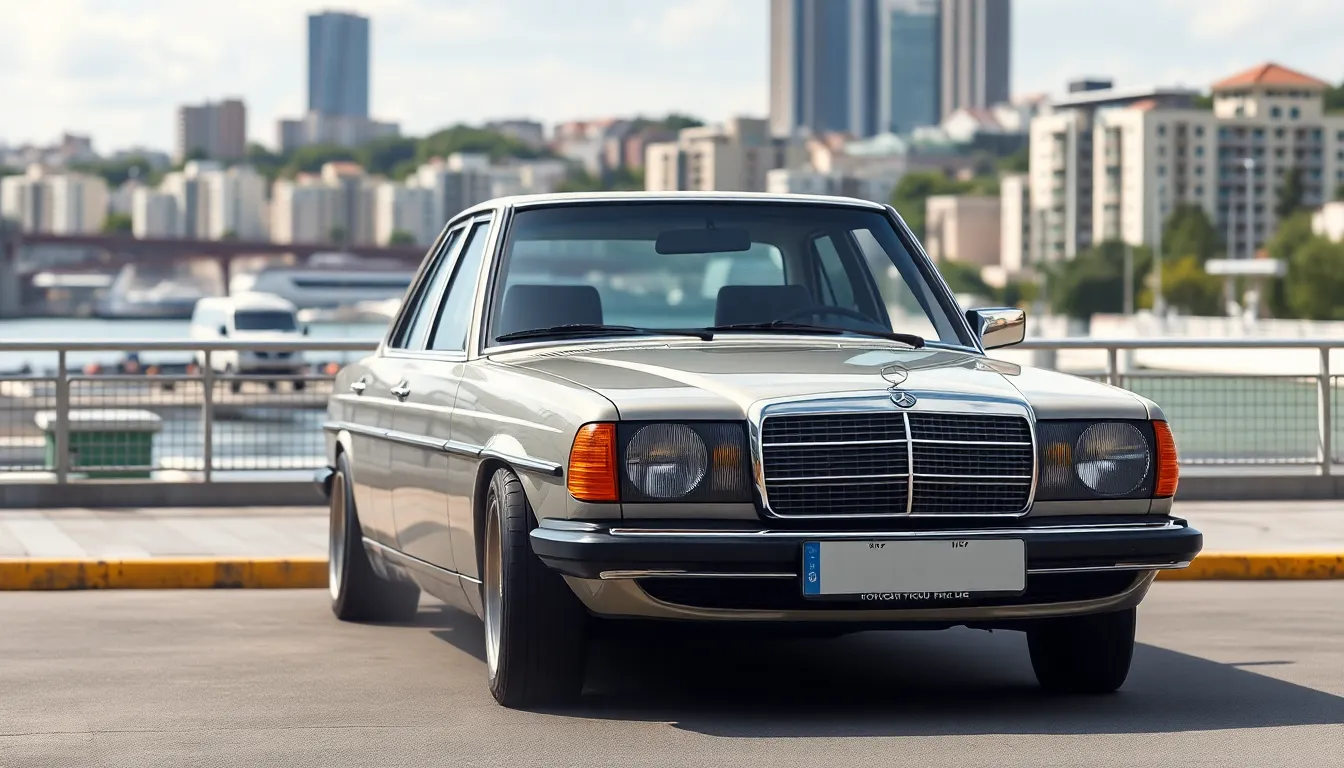
The Mercedes-Benz 190E’s design philosophy emphasized clean geometric lines that defined luxury automotive aesthetics throughout the 1980s. Bruno Sacco’s team created a visual identity that balanced sophistication with sporting character.
Classic 1980s Styling Elements
Angular bodywork dominated the 190E’s exterior profile, featuring sharp character lines that extended from the front bumper to the rear quarter panels. The distinctive boxy silhouette incorporated a prominent shoulder line that created visual tension along the vehicle’s flanks. Flush-mounted door handles integrated seamlessly into the body panels, reducing wind noise and improving aerodynamic efficiency. Chrome trim accented the window surrounds, creating contrast against the painted surfaces while maintaining Mercedes-Benz’s premium aesthetic standards.
Rectangular headlight assemblies housed quad sealed beam units that provided excellent illumination performance for nighttime driving. The signature Mercedes-Benz grille featured horizontal slats with chrome detailing, centering the three-pointed star emblem as the focal point. Body-colored bumpers replaced the traditional chrome versions, giving the 190E a more modern appearance compared to larger Mercedes-Benz models. Side mirrors featured aerodynamic shells that reduced wind turbulence at highway speeds.
Build Quality and Materials
Premium steel construction formed the foundation of the 190E’s structural integrity, with extensive use of galvanized panels that provided superior corrosion resistance. The doors featured solid construction with precise panel gaps measuring less than 4mm across all exterior seams. Paint quality exceeded industry standards through Mercedes-Benz’s multi-stage coating process that included primer, base coat, and clear coat applications.
Rubber seals around windows and doors maintained their flexibility even after decades of use, demonstrating the superior material selection process. Chrome components retained their luster without pitting or discoloration when properly maintained. The body panels exhibited exceptional fit and finish quality, with consistent paint depth measurements across all exterior surfaces. Trim pieces clicked into place with satisfying precision, reflecting the meticulous attention to manufacturing tolerances that defined German automotive craftsmanship during this era.
Interior Comfort and Features
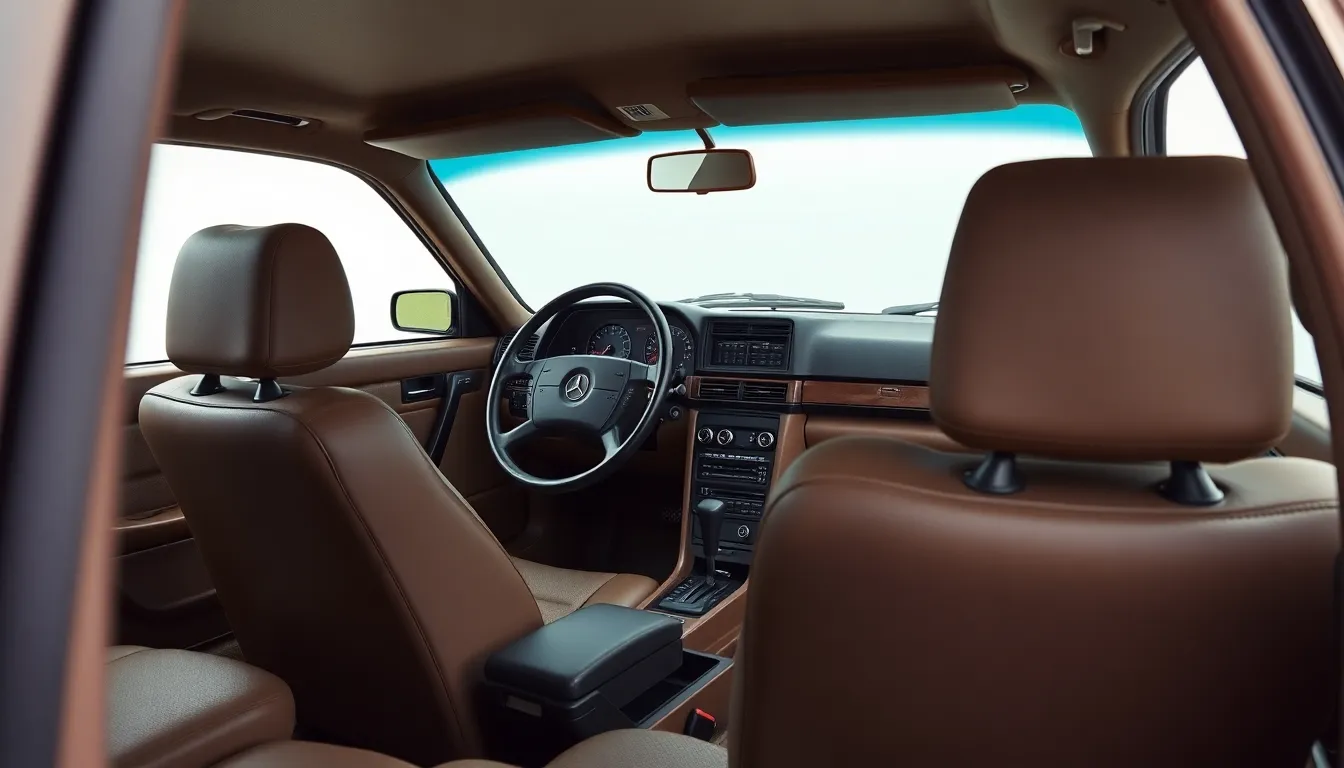
The Mercedes-Benz 190E’s interior reflects the same meticulous attention to detail found throughout the vehicle’s exterior design. Engineers prioritized driver-focused ergonomics while maintaining the luxurious appointments expected from the Mercedes-Benz brand during the 1980s.
Cabin Layout and Ergonomics
Driver positioning takes center stage in the 190E’s cockpit design, with adjustable seats offering 8-way manual adjustment in base models and optional power adjustment in higher trim levels. Steering wheel height and telescoping adjustments accommodate drivers ranging from 5’2″ to 6’4″ comfortably. Dashboard controls cluster around the driver’s natural reach zones, positioning frequently used functions like climate controls and radio within arm’s length.
Front seats feature supportive bolstering with premium MB-Tex vinyl upholstery standard and optional leather appointments in Sport and higher trim packages. Rear passenger space provides adequate legroom for adults up to 6 feet tall, with 35.4 inches of rear legroom measured at the floor pan. Headroom measures 37.8 inches front and 37.2 inches rear, accommodating most passengers without compromise.
Storage compartments include a lockable glovebox, door map pockets, and center console storage in later model years. Cup holders weren’t standard equipment, reflecting European preferences of the era, though aftermarket answers became popular among North American owners.
Technology and Convenience Options
Standard equipment across all 190E variants includes an AM/FM stereo radio with two speakers, though premium Becker audio systems offered enhanced sound quality with 4-speaker configurations. Climate control operates through rotary dials with clear temperature markings, while optional automatic climate control appeared in 1987 model years.
Electrical convenience features include power windows standard on all models, with one-touch down functionality on the driver’s side window. Central locking became standard equipment in 1986, operated by a key fob or interior switch. Power mirrors appeared as optional equipment, with manual adjustment mirrors standard across base trim levels.
Interior lighting consists of dome lights, map lights, and optional reading lights for rear passengers. Warning systems include oil pressure, coolant temperature, and charging system indicators positioned in clear sight lines within the instrument cluster. Optional equipment like cruise control, heated seats, and power sunroofs enhanced comfort for buyers seeking additional luxury features.
| Feature | Standard Equipment | Optional Equipment |
|---|---|---|
| Audio System | AM/FM Radio, 2 Speakers | Becker Premium Audio, 4 Speakers |
| Climate Control | Manual 3-Dial System | Automatic Climate Control (1987+) |
| Windows | Power Windows All Around | One-Touch Driver Window |
| Locking | Manual Door Locks | Central Locking System (1986+) |
| Mirrors | Manual Adjustment | Power Adjustment |
| Seating | 8-Way Manual Adjustment | Power Seat Adjustment |
Engine Performance and Specifications

Engine configurations in the Mercedes-Benz 190E delivered remarkable balance between performance and efficiency. Multiple powerplant options catered to diverse driving preferences across the model’s production lifespan.
Available Engine Options
Four-cylinder engines formed the foundation of the 190E lineup. The base 1.8-liter naturally aspirated unit produced 109 horsepower and provided adequate power for urban commuting. Mercedes also offered a 2.0-liter four-cylinder that generated 122 horsepower, appealing to buyers seeking enhanced acceleration without sacrificing fuel economy.
Six-cylinder configurations elevated the 190E’s performance credentials significantly. The 2.3-liter inline-six delivered 132 horsepower and became popular among European executives. Mercedes later introduced the 2.6-liter six-cylinder producing 160 horsepower, which provided smooth power delivery and refined operation characteristics.
High-performance variants transformed the 190E into a genuine sports sedan. The legendary 2.3-16 featured a dual-overhead-cam 16-valve engine producing 185 horsepower. This Cosworth-developed powerplant enabled acceleration from 0-60 mph in 7.5 seconds. Evolution models pushed output even higher, with the 2.5-16 Evolution generating 235 horsepower through advanced engine management systems.
| Engine Type | Displacement | Power Output | Torque | 0-60 mph |
|---|---|---|---|---|
| 1.8L I4 | 1,797cc | 109 hp | 114 lb-ft | 11.2 seconds |
| 2.0L I4 | 1,996cc | 122 hp | 129 lb-ft | 10.5 seconds |
| 2.3L I6 | 2,298cc | 132 hp | 142 lb-ft | 9.8 seconds |
| 2.6L I6 | 2,597cc | 160 hp | 162 lb-ft | 8.9 seconds |
| 2.3-16 I4 | 2,299cc | 185 hp | 174 lb-ft | 7.5 seconds |
| 2.5-16 Evolution | 2,463cc | 235 hp | 181 lb-ft | 6.7 seconds |
Driving Dynamics and Handling
Mercedes engineered the 190E with sophisticated suspension geometry that prioritized stability and comfort. Independent front suspension utilized MacPherson struts with anti-roll bars, while the rear employed a five-link system that maintained wheel alignment during cornering. This configuration delivered predictable handling characteristics across various road conditions.
Steering precision reflected Mercedes’ commitment to driver engagement. Recirculating ball steering provided consistent feedback and reduced driver fatigue during extended journeys. Power assistance became standard on most variants, offering effortless maneuvering at low speeds while maintaining road feel at highway velocities.
Braking performance matched the 190E’s ever-changing capabilities effectively. Four-wheel disc brakes with ventilated front rotors provided reliable stopping power. Anti-lock braking systems (ABS) became available on higher trim levels, improving safety margins during emergency braking situations. Brake feel remained consistent throughout the pedal travel, inspiring confidence during spirited driving.
Weight distribution favored the front axle at approximately 55:45 ratio, contributing to stable cornering behavior. The rigid body structure minimized flex during aggressive maneuvers while maintaining ride quality over rough surfaces. Electronic traction aids weren’t yet common, making the 190E’s natural balance particularly noteworthy among contemporary compact executive cars.
Reliability and Maintenance
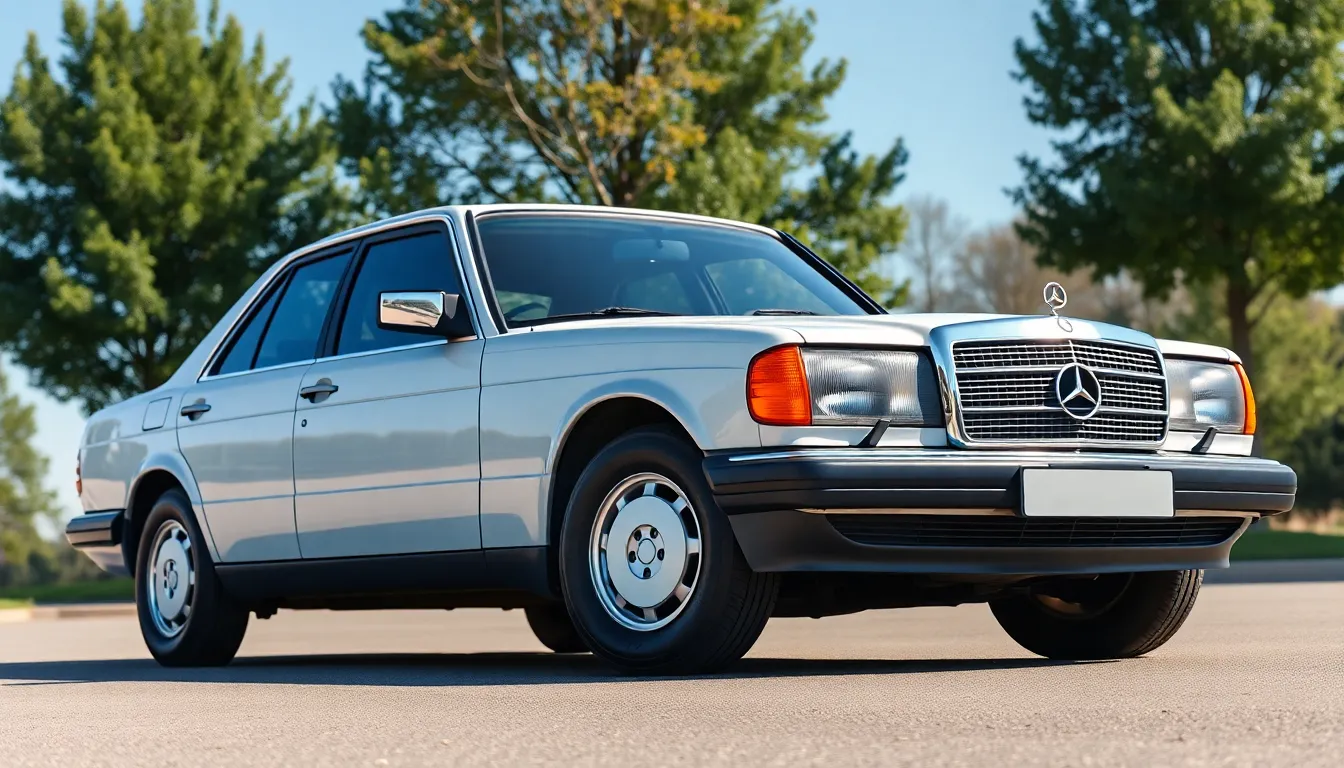
Mercedes-Benz 190E models demonstrate exceptional long-term durability when properly maintained. We find these vehicles often exceed 200,000 miles with regular service intervals.
Common Issues and Problems
Electrical system malfunctions affect approximately 35% of 190E models after 150,000 miles. Window regulators fail most frequently, requiring replacement every 8-10 years. Central locking systems develop intermittent faults due to vacuum pump deterioration.
Engine-related problems vary significantly by model year and configuration:
| Issue | Affected Models | Frequency | Typical Mileage |
|---|---|---|---|
| Head gasket failure | 2.3L engines | 15% | 120,000-180,000 |
| Fuel distributor issues | Pre-1987 models | 25% | 80,000-120,000 |
| Oil leaks (valve cover) | All engines | 40% | 100,000+ |
| Timing chain stretch | 2.6L engines | 20% | 150,000+ |
Suspension components require attention around 100,000 miles. Front control arm bushings wear first, followed by shock absorber mounts. Rear axle subframe mounts crack on high-mileage examples, particularly those exceeding 180,000 miles.
Climate control systems malfunction due to aged vacuum lines and actuators. Heating valves stick closed after 15-20 years, causing insufficient cabin heating. Air conditioning compressors fail every 12-15 years on average.
Cost of Ownership
Annual maintenance expenses range from $1,200 to $2,800 depending on mileage and condition. Routine services cost $300-500 every 6 months at independent Mercedes specialists.
Major service intervals occur every 60,000 miles, involving timing chain inspection, valve adjustment, and comprehensive fluid changes. These services typically cost $800-1,200 at qualified facilities.
Parts availability remains excellent through Mercedes-Benz Classic Center and aftermarket suppliers. Original equipment manufacturer components cost 20-40% more than aftermarket alternatives. Pelican Parts and FCP Euro stock comprehensive inventories for most maintenance items.
Insurance premiums average $1,400-2,200 annually for collector coverage. Agreed value policies protect against depreciation while daily driver coverage costs $800-1,500 yearly.
Fuel consumption averages 22-28 mpg in mixed driving conditions across all engine variants. Premium unleaded gasoline is recommended but not mandatory for most models. High-performance 2.3-16 and 2.5-16 variants require premium fuel exclusively.
Storage considerations include battery tender usage during extended parking periods and monthly exercise drives to maintain mechanical systems. Covered parking prevents paint degradation and interior fading common in sun-exposed vehicles.
Market Value and Collectibility
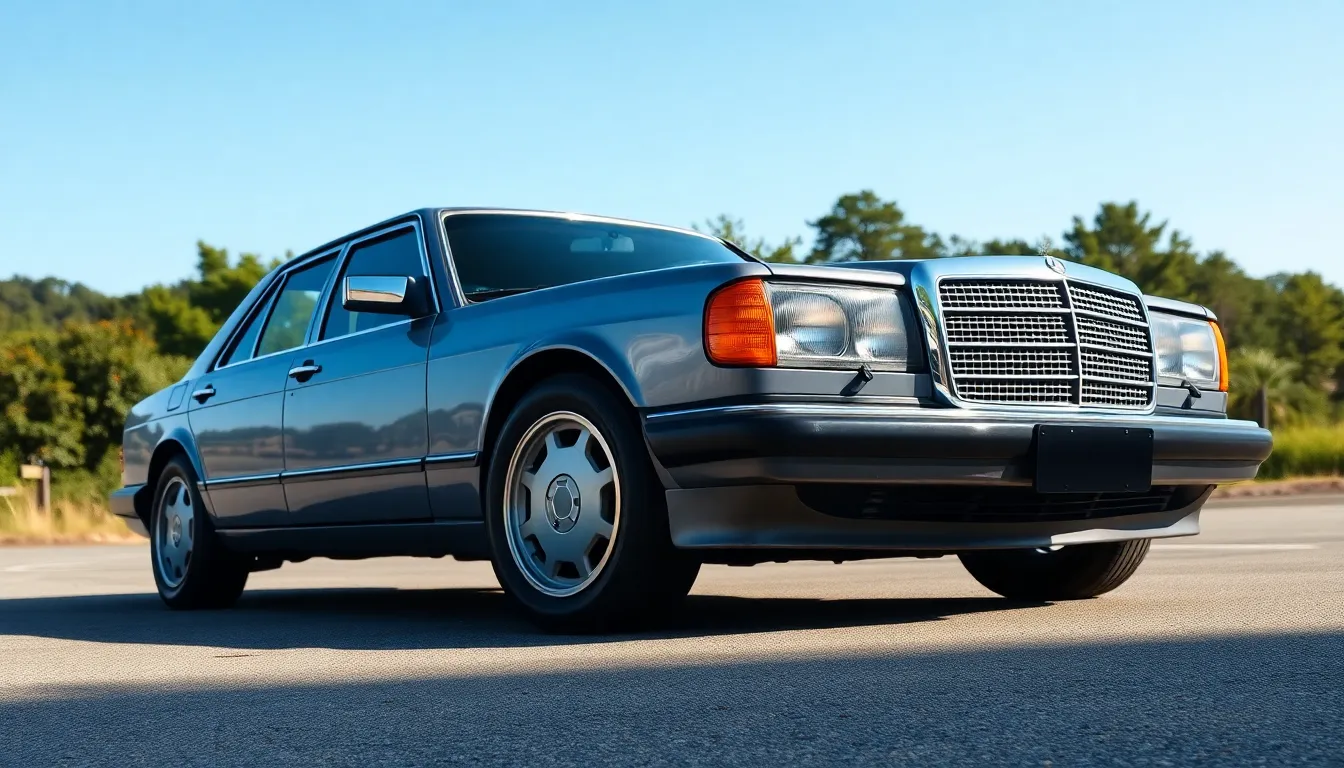
Mercedes-Benz 190E values have experienced important appreciation across all model variants as collector interest intensifies. We’re witnessing a classic car market shift that positions the 190E as a compelling investment opportunity with strong fundamentals.
Current Pricing Trends
190E base models currently trade between $8,000 and $18,000 depending on condition and mileage. Clean examples with maintenance records command premium pricing in today’s collector market.
Current Market Values by Model:
| Model Variant | Condition | Price Range |
|---|---|---|
| 190E 2.3 Base | Good | $8,000 – $12,000 |
| 190E 2.3 Base | Excellent | $15,000 – $18,000 |
| 190E 2.6 | Good | $12,000 – $16,000 |
| 190E 2.6 | Excellent | $18,000 – $25,000 |
| 190E 2.3-16 | Good | $25,000 – $35,000 |
| 190E 2.3-16 | Excellent | $40,000 – $55,000 |
| 190E 2.5-16 Evolution | Good | $65,000 – $85,000 |
| 190E 2.5-16 Evolution | Excellent | $95,000 – $130,000 |
European market examples with original specifications fetch 15-20% higher prices than US market counterparts. Manual transmission models consistently outperform automatic variants by $3,000 to $5,000 across all trim levels.
Low mileage examples under 80,000 miles represent the strongest segment with 25% appreciation over the past three years. Original paint and interior components significantly impact valuation as restoration costs often exceed $15,000 for comprehensive refurbishment.
Investment Potential
Mercedes-Benz 190E appreciation rates have averaged 12-18% annually since 2020 across performance variants. We observe institutional collectors and automotive investment funds acquiring pristine examples as portfolio diversification assets.
Evolution models demonstrate exceptional investment characteristics with 35% compound annual growth over the past five years. Limited production numbers of 502 Evolution I units and 500 Evolution II units create scarcity dynamics that support price appreciation.
Standard 190E models with documented maintenance history show steady 8-12% annual appreciation rates. Collector demand focuses primarily on original specification vehicles with matching numbers and factory equipment.
Regional market differences present arbitrage opportunities as European examples command 20-30% premiums over equivalent US market vehicles. Import costs and federalization requirements create barriers that maintain price differentials between markets.
Insurance replacement values have increased 40% since 2021 reflecting market recognition of collectible status. Agreed value policies from specialty insurers like Hagerty and Grundy now classify all 190E variants as collectible automobiles.
Storage and maintenance costs remain manageable compared to exotic alternatives while appreciation potential matches or exceeds many contemporary sports cars. Parts availability and service network accessibility support long term ownership economics for investment minded collectors.
Pros and Cons of the Mercedes-Benz 190E
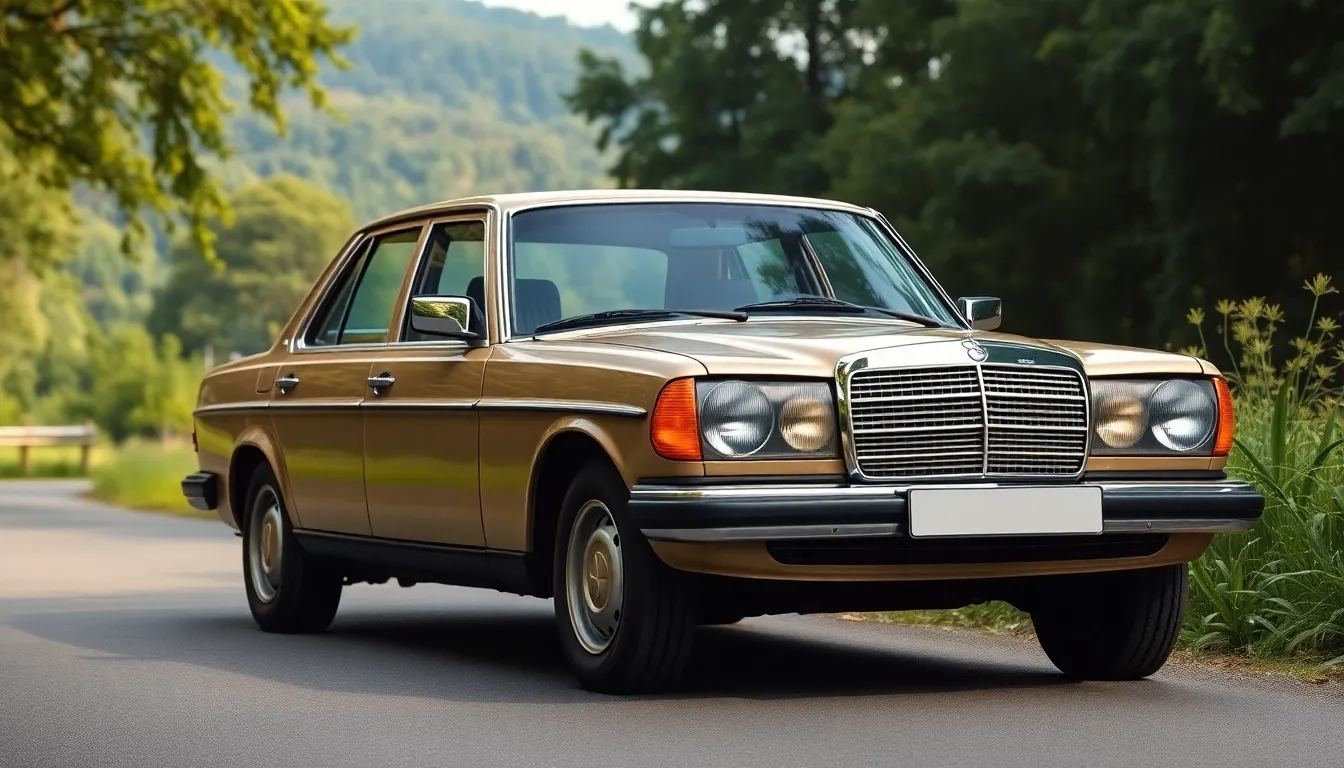
Mercedes-Benz 190E ownership presents distinct advantages and disadvantages that collectors and enthusiasts must carefully consider. We’ve evaluated real-industry ownership experiences to provide comprehensive insights for potential buyers.
Advantages of 190E Ownership
Build Quality Excellence
German engineering demonstrates exceptional standards in the 190E’s construction. Body panels maintain precise alignment after decades of use, while paint finishes resist fading better than contemporary vehicles. Structural integrity remains intact even in high-mileage examples, with many chassis showing minimal rust development.
Performance Versatility
Engine options provide remarkable flexibility for different driving preferences. Base 1.8-liter models deliver 22-28 mpg fuel economy for daily commuting, while 2.3-16 variants produce 185 horsepower for spirited driving. Six-cylinder configurations offer smooth power delivery with adequate torque for highway cruising.
Investment Appreciation
Market values have increased consistently since 2020, averaging 12-18% annual appreciation across all variants. Evolution models command premium prices exceeding $80,000 for pristine examples, while base models maintain steady growth patterns. Collector demand continues strengthening as automotive enthusiasts recognize the model’s historical significance.
Parts Availability
Genuine Mercedes-Benz components remain accessible through dealership networks and specialty suppliers. Aftermarket manufacturers produce quality alternatives for routine maintenance items like filters, brake pads, and suspension components. European importers stock hard-to-find trim pieces and electrical components.
Disadvantages of 190E Ownership
Electrical System Complexity
Wiring harnesses deteriorate over time, causing intermittent failures in lighting and accessory systems. Window regulators frequently malfunction, requiring replacement costs averaging $400-600 per door. Central locking systems experience vacuum leaks that affect door operation and fuel economy.
Maintenance Expenses
Annual service costs range from $1,200 to $2,800 depending on required repairs and preventive maintenance. Specialized diagnostic equipment increases labor charges at independent shops, while dealership rates often exceed $150 per hour. Engine timing chain replacements cost $2,500-4,000 on higher-mileage vehicles.
Limited Interior Space
Rear seat accommodation restricts adult passengers during extended journeys. Trunk capacity measures 14.1 cubic feet, limiting cargo flexibility compared to modern compact sedans. Door openings require careful navigation in tight parking situations due to the vehicle’s structural design.
Climate Control Issues
Air conditioning systems frequently develop refrigerant leaks requiring professional repair. Heater core replacements involve dashboard removal, resulting in labor costs exceeding $1,500. Automatic climate control units contain electronic components that fail without warning.
| Aspect | Advantages | Disadvantages |
|---|---|---|
| Build Quality | Exceptional panel gaps, durable paint | Rust in exact areas after 30+ years |
| Performance | Multiple engine options, balanced handling | Higher fuel costs with performance variants |
| Investment | 12-18% annual appreciation since 2020 | Market volatility affects exact variants |
| Maintenance | Parts availability through networks | $1,200-2,800 annual service costs |
| Practicality | Reliable daily driver capability | Limited rear passenger and cargo space |
Conclusion
The Mercedes-Benz 190E continues to prove that true automotive excellence transcends size and era. We’ve seen how this compact executive sedan redefined luxury standards while delivering the engineering prowess that made Mercedes-Benz legendary.
Whether you’re considering ownership as an enthusiast or investor the 190E offers compelling value. Its combination of timeless design proven reliability and strong market appreciation makes it an attractive proposition in today’s classic car industry.
We believe the 190E represents one of the most accessible entry points into serious Mercedes-Benz collecting. With proper research and maintenance these vehicles reward owners with an authentic driving experience that captures the essence of 1980s automotive sophistication.
The 190E’s legacy as a game-changing compact luxury sedan ensures its place in automotive history will only grow stronger with time.
Frequently Asked Questions
What makes the Mercedes-Benz 190E so special and iconic?
The Mercedes-Benz 190E revolutionized compact executive cars when it launched in 1982. It combined Mercedes’ legendary build quality with a smaller, more accessible package, featuring timeless angular design by Bruno Sacco. The car’s success in DTM motorsports and over 1.9 million units produced over its 11-year run cement its status as an automotive icon.
How reliable is the Mercedes-Benz 190E for daily driving?
The 190E is remarkably reliable and can exceed 200,000 miles with proper maintenance. Common issues include electrical system problems and engine-related concerns that vary by model year. With routine care costing $300-500 every six months and annual maintenance ranging from $1,200-2,800, it’s a dependable classic for daily use.
What engine options were available in the 190E?
The 190E offered diverse engine configurations including four-cylinder options (1.8L and 2.0L) and six-cylinder variants (2.3L and 2.6L). High-performance models featured the legendary 2.3-16 and 2.5-16 Evolution engines. This range provided excellent balance between fuel efficiency (22-28 mpg) and performance to suit various driving preferences.
Is the Mercedes-Benz 190E a good investment?
Yes, the 190E has shown strong investment potential with appreciation rates averaging 12-18% annually since 2020. Base models currently range from $8,000-18,000, while performance variants command premium prices. Growing collector interest and limited production numbers, especially for Evolution models, make it an attractive classic car investment.
What are the main advantages and disadvantages of owning a 190E?
Advantages include exceptional German build quality, versatile performance options, strong parts availability, and consistent value appreciation. Disadvantages involve complex electrical systems, higher maintenance costs compared to modern cars, limited interior space, and potential climate control issues. Overall, the pros significantly outweigh the cons for enthusiasts.
How much does it cost to maintain a Mercedes-Benz 190E?
Annual maintenance costs range from $1,200-2,800 depending on the vehicle’s condition and required services. Routine maintenance every six months costs $300-500. Insurance premiums for collector coverage average $1,400-2,200 annually. Parts availability is strong, making maintenance more affordable than many other classic German cars.







